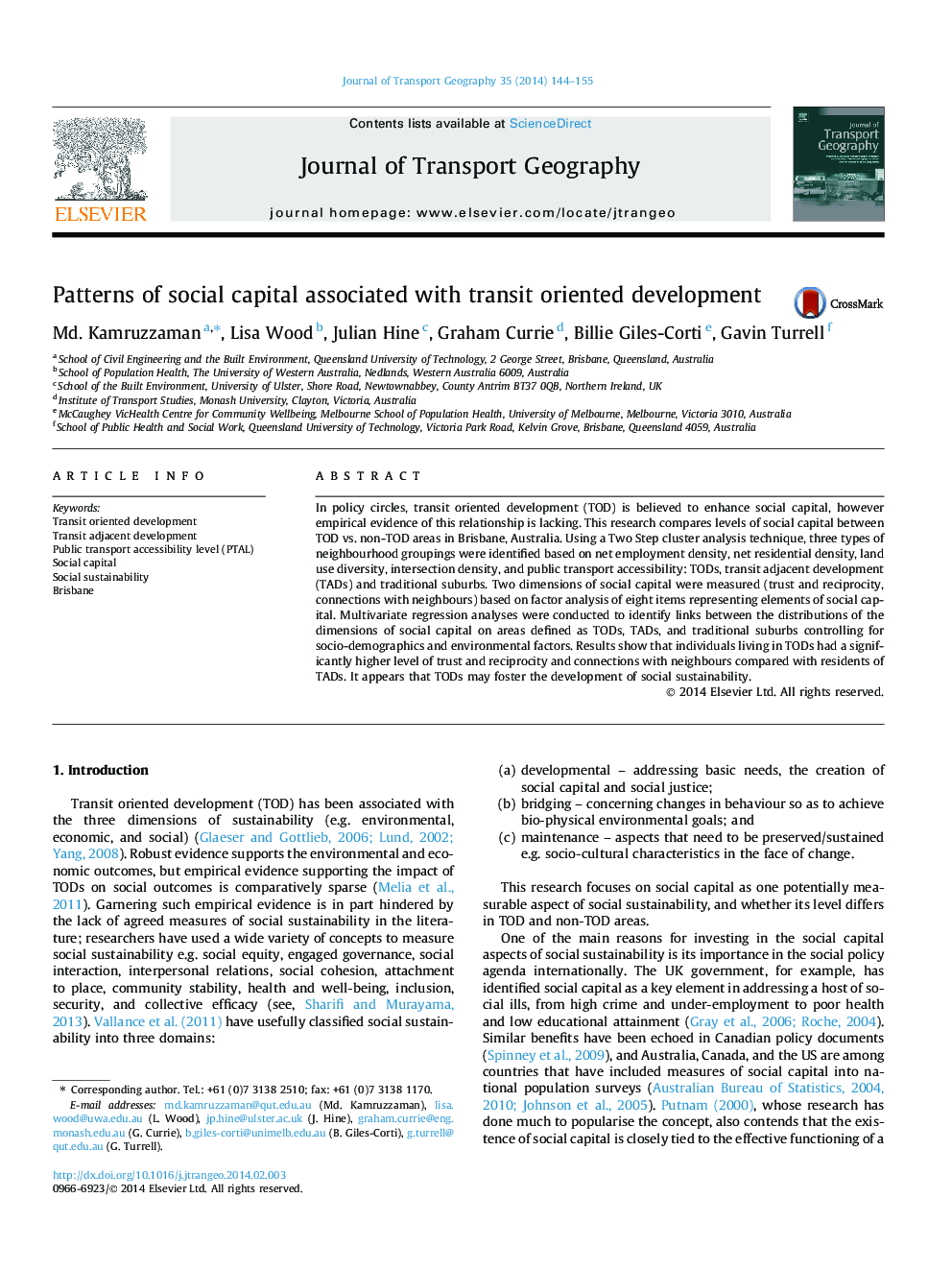| Article ID | Journal | Published Year | Pages | File Type |
|---|---|---|---|---|
| 1059157 | Journal of Transport Geography | 2014 | 12 Pages |
•Cluster analysis was used to classify neighbourhoods into TOD, TAD, and traditional suburbs.•Two dimensions of social capital were identified (e.g. trust and reciprocity, and connectedness with neighbours).•Increased trust and reciprocity, and connection with neighbours were associated with living in TODs.•Residential self-selection has a strong effect on the development of social capital within neighbourhoods.
In policy circles, transit oriented development (TOD) is believed to enhance social capital, however empirical evidence of this relationship is lacking. This research compares levels of social capital between TOD vs. non-TOD areas in Brisbane, Australia. Using a Two Step cluster analysis technique, three types of neighbourhood groupings were identified based on net employment density, net residential density, land use diversity, intersection density, and public transport accessibility: TODs, transit adjacent development (TADs) and traditional suburbs. Two dimensions of social capital were measured (trust and reciprocity, connections with neighbours) based on factor analysis of eight items representing elements of social capital. Multivariate regression analyses were conducted to identify links between the distributions of the dimensions of social capital on areas defined as TODs, TADs, and traditional suburbs controlling for socio-demographics and environmental factors. Results show that individuals living in TODs had a significantly higher level of trust and reciprocity and connections with neighbours compared with residents of TADs. It appears that TODs may foster the development of social sustainability.
